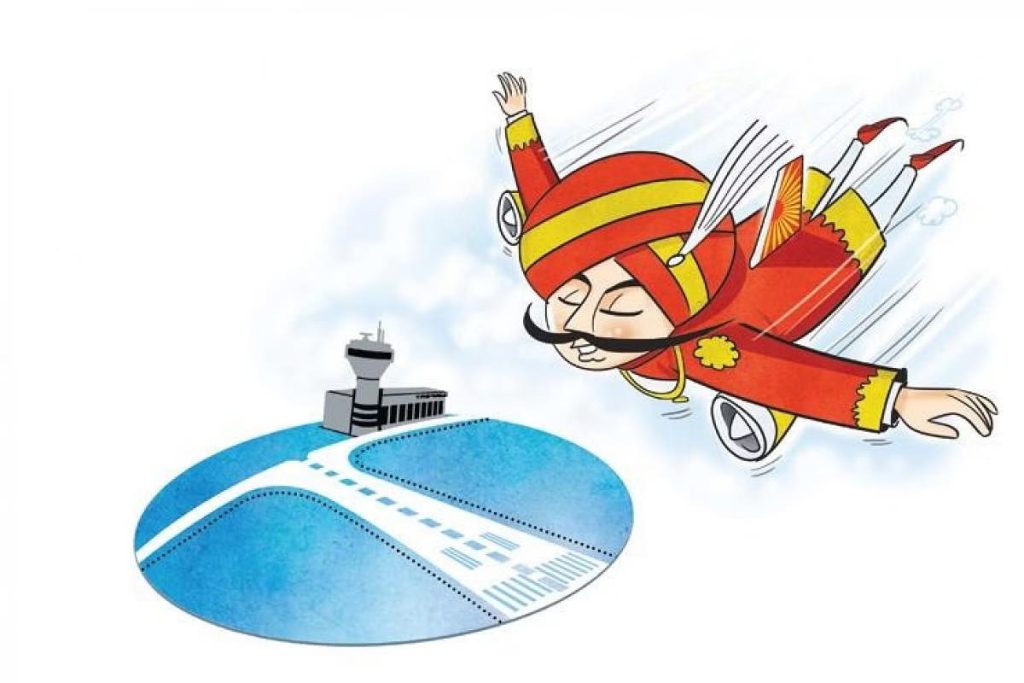
Stanley Pinto
The Air India brand was created NOT out of public money but by the Tata Group in years gone by before it was systematically destroyed by the incompetent and corrupt management of the public sector.
Manish Tewari, an MP and former I&B Minister, has been railing untiringly against the sale of Air India to the Tata group. His latest irruption is an op-ed in The New Indian Express newspaper. While he is not a supporter of decades of mismanagement and malfeasance that plagued Air India, he says he believes the public sector nevertheless has a role in the Indian economy—even in running an airline. An absurd contradiction, indeed, in a single sentence.
Tewari says, “Selling assets, brands, and businesses created out of public money to a private entity, even if it is India’s most respected corporate entity, is morally repugnant and ethically reprehensible.” That statement is pure fakery!
The Air India brand was created NOT out of public money but by the Tata Group in years gone by before it was systematically destroyed by the incompetent and corrupt management of the public sector. The business of businesses, even those operated by government bureaucrats, is to make profits. What comes easier to them is the putrefaction of anything that even remotely resembles profits.
I came up with several examples of this. Let me count the ways.
Fifty years ago, my office in Bombay was immediately next to the Air India building at Nariman Point. It gave me the greatest joy to wander through its corridors and look at the wonderful (and hugely valuable) works of art on its walls. I did this often; as a friend of Bobby Kooka, Sohrab Modi, and Uttara Parikh, all doyens of the company’s marketing division, I had free rein to wander through the building. Those paintings, worth crores today, rapidly disappeared after the government took over the airline. One chairman, long retired, allegedly even now has several on the walls of his private home. Gone and almost forgotten.
Under the Tata regime, Air India’s management and sales office in London was in the city’s stellar Mayfair district. After nationalisation, it was relocated to Ealing, a lower-middle-class residential area populated largely by South Asian families. I recall going there once to update my return ticket to India. It could have been done on the telephone, except that the line had been cut for non-payment of British Telecom’s bills. The only indication that it was the
Air India office was a life-size cardboard cutout of the Maharaja at the entrance. Similarly, the office in New York was on the city’s posh Park Avenue, in the block adjoining what was then the iconic PanAm building, a landmark now known as the MetLife building. That, too, has disappeared into midtown Manhattan, a far cry from Park Avenue.
How and for how much were the Mayfair and Park Avenue offices sold off? Who made those deals? Perhaps Mr Tewari, who says he has been a “principled” opponent of the Air India divestment process, has the answers.
That corruption underlined every stage of the nationalisation of Air India is largely unquestioned by those in the know. In the 1990s, as a management consultant to a major corporation in Muscat, the capital of the Sultanate of Oman, I was on the board of a company that had been the General Sales Agent for Air India for decades. It had made Air India the most profitable airline of all that operated in Oman.
And then one day, without any notice, we received a message that its services would not be required any more, with immediate effect. A message via telephone; nothing as incriminating as a written notice.
After trying to get someone at Air India HQ on the phone all day, a fellow director and I flew to Bombay and proceeded almost directly from the airport to the Nariman Point office. We were made to wait in the reception for a few hours until, just before the close of the day, we were ushered into a meeting room to be confronted by a group of executives.
When we asked why our GSA contract had been terminated, the answer was short: We don’t have to provide any reason; we have the right to make changes. And that was the end of the meeting. Short, though not sweet.
Decades of honest and top-flight service were unceremoniously trashed. The company that was given the GSA contract had no experience in the business, but the large amount of money that allegedly changed hands made that acceptable.
As a frequent international traveller for over fifty years, my airline of choice was always Air India. It was unquestionably, along with one or two others, the finest in the world. (I still have an ashtray designed by the world’s foremost surrealist artist Salvador Dalí on a commission by JRD; it was sometimes gifted to frequent first class flyers.)
In 1953, Nehru nationalised the airline but kept JRD on as chairman. Then Morarji Desai removed JRD from the chairmanship in 1978. From that point on, it wasn’t long before it fell down the rankings.
The last time I flew Air India, just to experience what once had been and now was, the cushion of my seat was missing; I was sitting directly on its metal base. The armrest came off its moorings and fell onto the aisle when I rested on it. The TV screen didn’t work. And all this in first class!
So I say to Mr Tewari, I don’t know what you consider “morally repugnant” and “ethically reprehensible” about giving this once world-beating entity a second chance.
Give it five years and there will be a long-awaited resurrection. Air India will bloom again.
(The writer is a Former international marketing communications professional)





